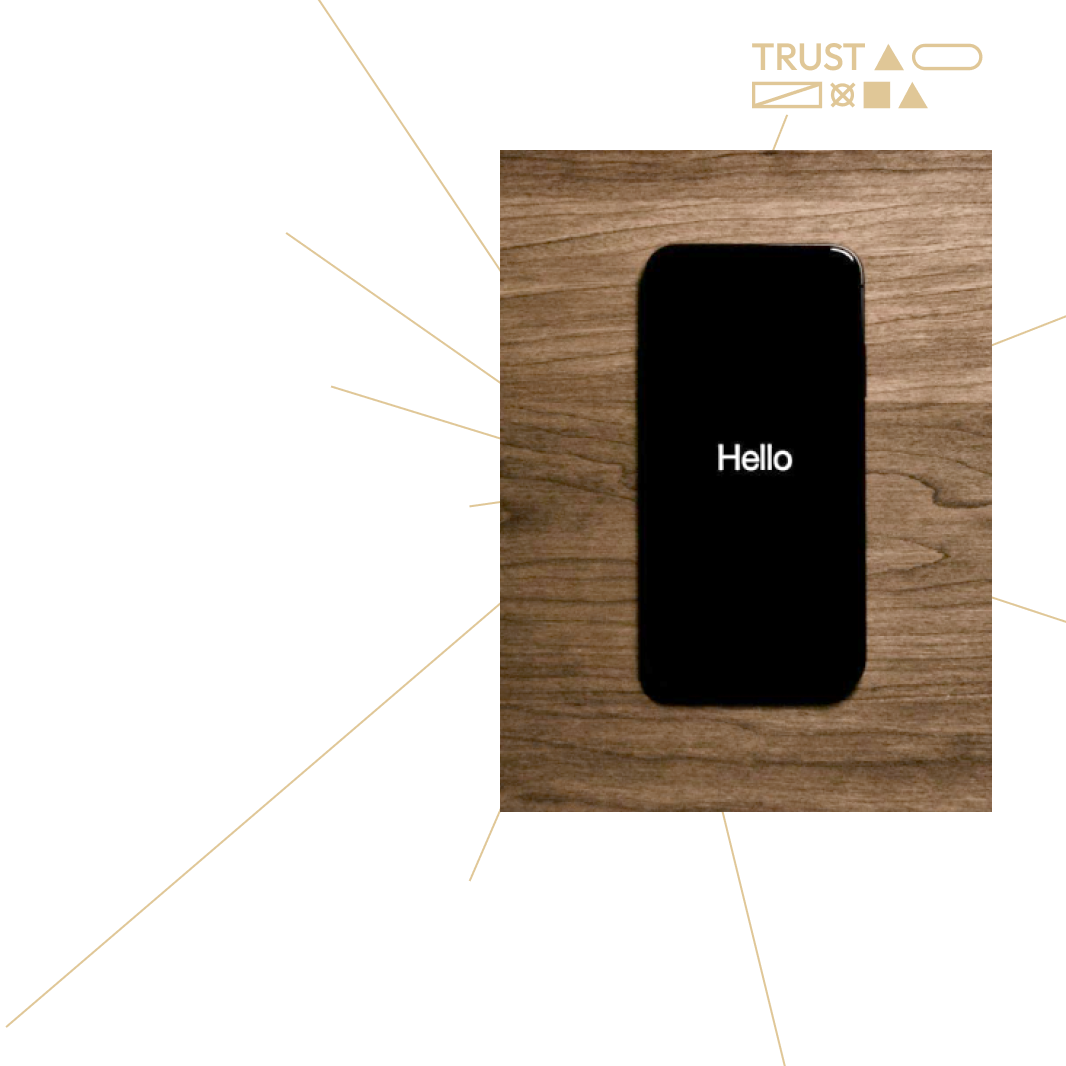Artificial intelligence (AI) is transforming the marketing landscape and enterprise brands face a big challenge: how to build trust in generative AI while protecting unique brand identities and navigating the risks of bias, inaccuracy, and loss of authenticity. So how can marketers and brand leaders find their way forward? It’s time to embrace experimentation, refine AI’s role in creative processes, and cultivate a balance between human ingenuity and automated efficiency. Here’s how brands can establish trust in AI and unlock its potential for growth.
Mapping the route toward brand trust in AI.
Despite profound excitement, generative AI’s ascent has also been marked by equal amounts of skepticism – particularly around issues with “hallucinations”, biases in training data, and potential copyright issues. CMOs are highlighting misinformation or disinformation as a top concern, and agencies are focused on copyright infringement risks.
Trust in AI will also grow as technologies improve, offering tools to refine how AI models learn brand nuances, tone, and audience preferences. But marketers must begin working now to build mechanisms that ensure AI aligns with brand values and audiences. This ensures relevance and minimises risks, making marketers more confident about incorporating AI into creative workflows.
Combining people and platforms for creative impact.
Much like autonomous driving, generative AI is a remarkable feat of data and engineering. But both still require attentive and consistent human oversight and judgement to avoid errors. AI also needs that still-unique spark of human inspiration.
And it’s this synergy between human creativity and machine efficiency that will be essential for brands looking to deliver marketing that cuts through, connects with consumers, and promotes sustained affinity for a distinctive and compelling brand. AI offers unmatchable speed and scale, automating repetitive tasks that amplify messaging while enabling human creatives to focus on ideation and storytelling. (The stuff we’re best at.) By combining talent with technology, brands can execute campaigns that resonate with individual consumers – moving them emotionally, functionally, and transactionally.
Instead of seeing generative AI tools and technologies as the foundation for one big do-my-marketing button, marketers should view AI as a partner – augmenting human creativity, not replacing it. AI will always be best at generating and personalising content at scale while humans curate, contextualise, and infuse campaigns with authentic brand voice and intent.
Avoiding the abyss of mid-tier mediocrity.
One big pitfall of over-reliance on generative AI is the potential for getting lost in an autonomous sea of sameness – where brands run the risk of all looking and sounding alike, and losing their distinctive voice or essence. Marketers must work to embed their unique tone, vibe, and value propositions into AI models to prevent this from happening. This will help to ensure each campaign reflects a brand’s true and wonderfully prickly identity, even as content gets personalised for different audiences and tailored to individual interests and needs.
The challenge is striking a balance: leveraging AI to create relevant, individualised content without diluting brand consistency. Brands should set clear boundaries for AI to operate within while maintaining the flexibility to adapt to customer preferences.
Experimenting your way to AI literacy and confidence.
There are plenty of all-in, early-adopter marketers out there, diving into AI technologies and excitedly building new creative production workflows. But if you’re a cautious marketer worried about the risks of AI (or simply lacking the same level of knowledge around and fluency in AI tooling to feel confident making large-scale recommendations and changes), trust in AI should be built through a phased approach to experimentation:
- Start with text-based applications like ad copy – quick to iterate and less prone to copyright concerns
- Progress to evergreen content like website copy
- Eventually, begin to experiment with visual assets, relying on rights-secured AI tools.
AI’s potential isn’t limited to consumer-facing campaigns. It can also streamline internal processes, from organising insights to automating research summaries. These ‘behind-the-scenes’ use cases provide a low-risk environment for brands to familiarise themselves with AI capabilities.
Finding balance in the future of marketing.
As AI tools evolve, the benefits of scale and efficiency will make their adoption essential for competitive brands. AI enables marketers to execute campaigns across multiple channels, meeting the demand for fresh, engaging content. But its true power lies in augmenting – not replacing – human creativity.
Marketers should embrace AI as a tool to spark innovation, refine workflows, and drive measurable performance. This will enable them to engage audiences in ways that were previously unimaginable, maintaining their brand’s emotional connection while scaling their reach.
One key takeaway.
For brands ready to explore AI’s transformative potential, the path forward begins with trust, experimentation, and a steadfast commitment to creativity. The human-machine partnership isn’t the future of marketing. It’s the new normal.
The insights in this series are based on conversations and learnings you can find in our new podcast, “The Array.” Want to learn more? Catch up with our second episode, featuring Jay Pattisall, VP and Principal Analyst at Forrester.
Be the first to see true 1:1 personalisation in action
Our latest offering tailors your messaging to each individual and delivers contextually relevant language that resonates with every customer – every time


